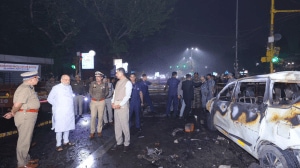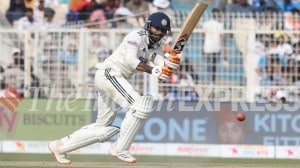Experience as a cricketer comes in handy, but qualification always helps: Prasad
He's got the job done with all three brands — the SG, Duke and now the Kookaburra.

He’s got the job done with all three brands — the SG, Duke and now the Kookaburra. He’s worked with the junior lot just as well as he has managed the seniors. He has tempered the aggressive and handled the fragile in equal measure to get the best out of them, at home and away. People on the streets recognise his face, but have only forgotten his name. “Venkatesh Prasad,” he helps them with a little introduction, adding, “I am the bowling coach of the Indian team.” After leading the Indian bowling attack for close to a decade, Prasad has preferred to keep himself in the background — preparing new artistes to perform on the big stage, acting as a prompter to the nervy, young guys — since taking over as the bowling coach. In a free-wheeling chat with The Indian Express, Venky reveals how he gets his young guns charged up all the time to fire . Excerpts:
What rapport do you share with the present seam attack, of a coach, mentor or friend?
 • I would say all three. I have to tell them what needs to be done at the nets and in match situations, tell them the importance of bowling in the right areas, advise them on issues like how to use the breeze, and tell them how to adjust the line if you are running into the breeze. I would divide my role into five aspects — technique, tactical, mental, physical, and lifestyle. Lifestyle because I need to know them on field and otherwise as well. That plays a huge role because you need to know about your bowlers in and out to work better with them.
• I would say all three. I have to tell them what needs to be done at the nets and in match situations, tell them the importance of bowling in the right areas, advise them on issues like how to use the breeze, and tell them how to adjust the line if you are running into the breeze. I would divide my role into five aspects — technique, tactical, mental, physical, and lifestyle. Lifestyle because I need to know them on field and otherwise as well. That plays a huge role because you need to know about your bowlers in and out to work better with them. You have played your cricket and also earned the qualification to coach. Which is of more use in dealing with the players?
• 60-40 in favour of experience as a cricketer. You know how to react to situations better if you have played but yes, qualifications in coaching is equally important. You must know the bio-mechanics to be able to correct a fault in a bowler.
Isn’t it strange that none in your unit want to be a tearaway fast bowler? Does that allow more discipline in bowling and would you attribute that aspect to your win here?
• I don’t have fast bowlers, but I have three strike bowlers with me. What I don’t want in my fast bowling unit is a third seamer. I don’t have any guy who comes in the side as a third seamer. All the boys when they play their domestic cricket are strike bowlers for their respective teams, be it Ishant, Pankaj, Pathan or VRV, I just urge them to keep that attacking spirit. If Pathan or Ishant is coming one-change to bowl, they become the strike bowler for the team.
How do you monitor the workload of the bowlers, and keep that intensity on field?
• Gregory (King) and I have been keeping an eye on it. We observe the spells they bowl at the nets, during the matches. We do a lot of training, and sometimes if we feel that the bowlers are getting worked up, we just give them a day off at nets and tell them to go out and do whatever, just to free their mind and come back fresh.
You are a seam bowler and this Perth Test showed how well you managed this young attack. But how would you manage Piyush Chawla and Harbhajan in the coming ODIs?
• I am a bowler first, and the basics remain the same. If Piyush is not getting the ball to turn or is bowling more on his legs, you know immediately where the fault lies. That is where the coaching qualifications come into play. I have been able to help the spinners as much as the fast bowlers.
You met your coach Dennis Lillee here, and what was the conversation all about?
• I met him here on the morning of the second day, and it was nice. I was under him at the MRF Pace Foundation in Chennai. He told me how to use the breeze here and I passed that advice on to my lot.































